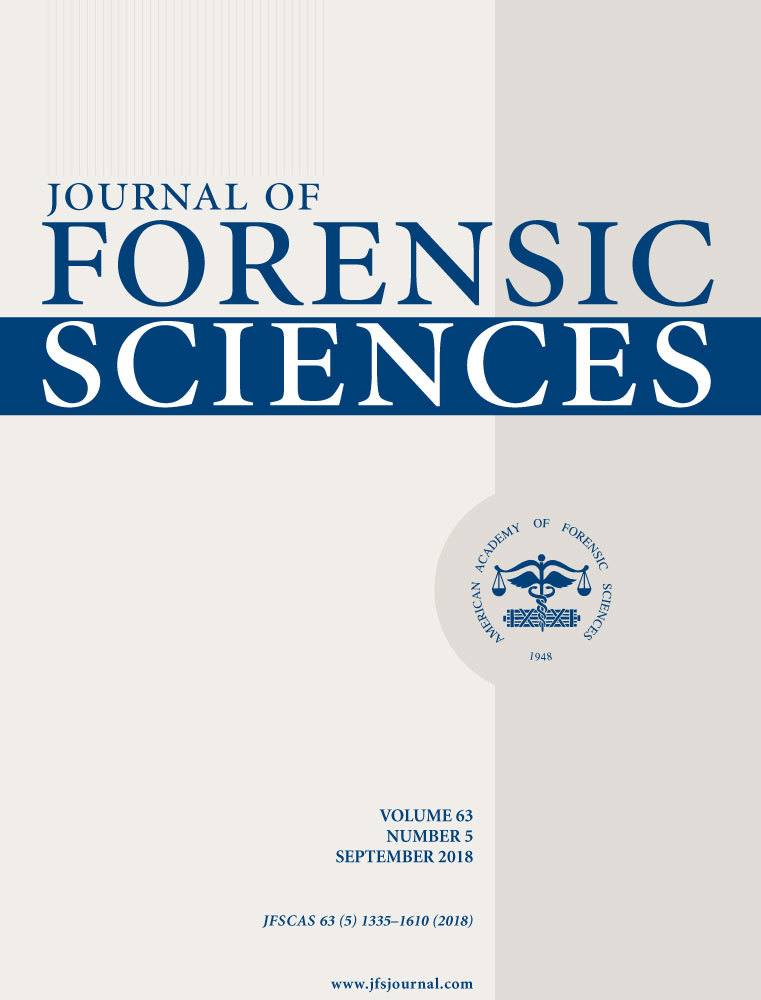Collection of Wet-Origin Footwear Impressions on Various Surfaces Using an Electrostatic Dust Print Lifter†
Abstract
Electrostatic dust print lift method is known to be able to recover only dry-origin footwear impression. However, the wet-origin footwear impression could also be recovered using this method. As the amount of dust accumulated before deposition of the wet-origin footwear impression increased, the intensity of the footwear impression lifted with this method became stronger. If the footwear impression is not affected by moisture after it is made, the 28-h old wet-origin footwear impression could be recovered using this method. The intensity of the lifted footwear impression did not decrease significantly even when the number of sequential steps increased as long as the shoe sole is wet. However, when the moisture on the shoe sole depleted, the intensity of the footwear impression decreased sharply. This method has the advantage of being able to enhance the footwear impression without being affected by the footwear impressions deposited in the past.




